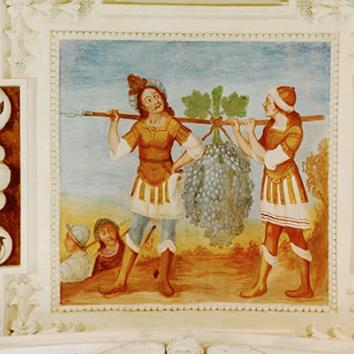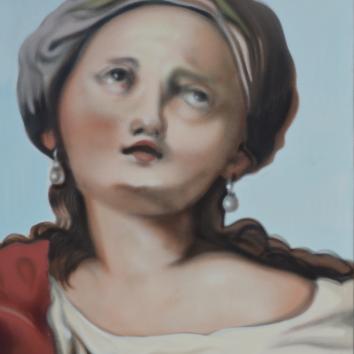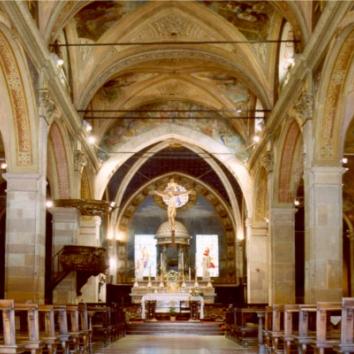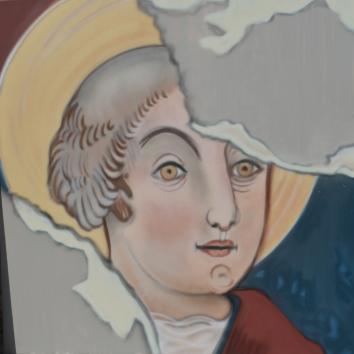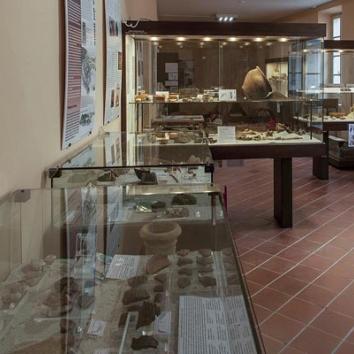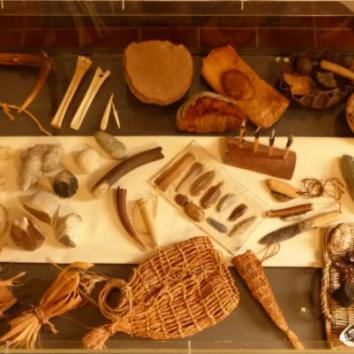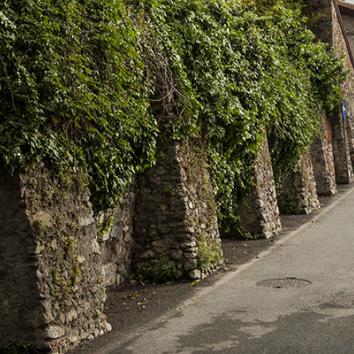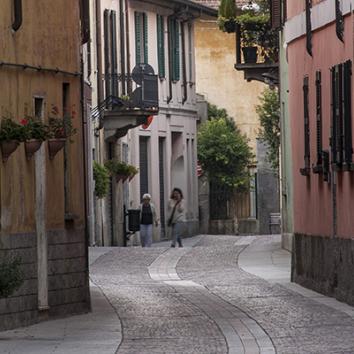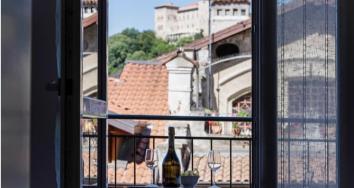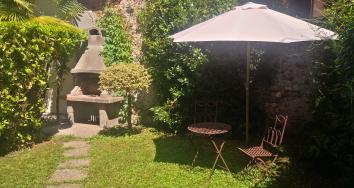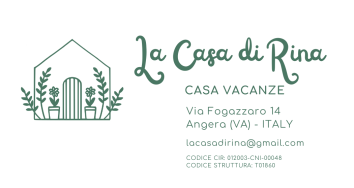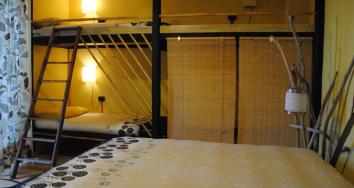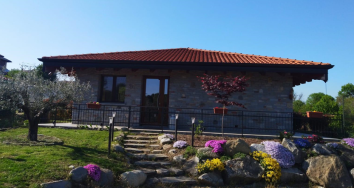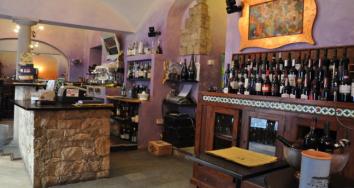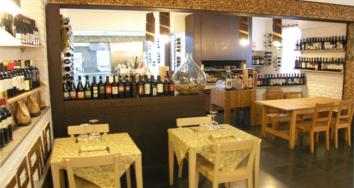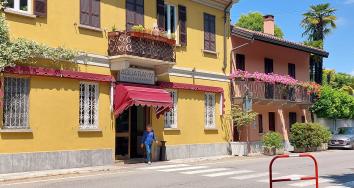Chapel of Peace
1961
An old chapel dedicated to the Madonna della Pace is recorded on this site from 1579; the main processions recorded in the Capitular Diary passed here, in particular those that went from Angera to Ranco and back, along the Vigane and the old road to Ranco. It was demolished in about 1950 and in 1961 this chapel was built to replace it, near the entrance to the Angera schools.
The painting inside shows the Madonna seated holding the infant Jesus.
The writing below includes the signature of Carlo Meloni is dated 1961.
Prayers for the well-being of mothers and children
In the past, maternity and infancy were delicate periods; infant mortality and death during childbirth were common. Female prayers were often observed in restricted circles, among women, and – being linked to ancient traditions – they were often associated with beliefs and wisdom from antiquity, not always encouraged by the ecclesiastical hierarchy. In Angera and the lower Lake Maggiore area the veneration of the Mother Goddesses, three sisters known as the Moirai or Parcae, is widely attested as the cult of the Matronae from at least the 1st century AD; it was particularly associated with the town. The cult was perhaps connected with the cave located at the foot of the Rocca (castle): caves were once considered places of contact with Mother Earth and are in fact often associated with female cults. In Lombardy the Matrone Dervonne, i.e. of the oaks, were venerated; the three goddesses were sometimes called the Fates, goddesses of destiny, responsible for a newborn’s first days of life – and horoscope, written in the book of life by analyzing the celestial globe with a wand. Under the oak trees, rites were celebrated which included a dance hand-in-hand; this is illustrated on an altar dedicated to the goddesses found in Angera, now kept in the Varese Archaeology Museum. This ancient and widespread cult is linked to rituals related to the role of midwives, wet-nurses and healers, women aware of the mysteries of birth, breastfeeding and health, thanks in part to their knowledge of Mother Nature’s pharmaceutical remedies. With the spread of Christianity this pagan worship was forbidden and the three goddesses in some cases became martyrs; in our territory they were perhaps identified with Saints Onorata, Speciosa, Luminosa and Liberata, venerated together from the 5th century onwards, or the martyrs Liberata and Faustina, who lived in the 6th century. Meanwhile the Madonna of the Oak (or Acorn) became widespread, and is still known on Lake Maggiore and in Somma Lombardo.
At Angera, together with the devotion to Mary as mother, especially in the form of Our Lady of the Milk, the cult of St Liberata was long observed. An old chapel dedicated to her existed from at least 1406; it was recorded to be in poor condition in 1567 and its demolition was ordered, but the instruction was not carried out. In 1634 the chapel was rebuilt by Giulio Cesare and Giovanni Borromeo, who had purchased the land on which it was constructed. Throughout the following century, on 18th January – which at that time was Women’s Day – Holy Mass was celebrated in the chapel of the saint who gave protection against the dangers of childbirth and infant mortality. Veneration of St Liberata continued to be observed by womenfolk, but the chapel slowly fell into disuse, changing owners several times and no longer open to the public.
In the church there is a fresco of St Agata, patron of wet-nurses and nurses, and St Liberata, and the rectory of St Maria Assunta contains a painting that shows the saint as a young woman with infants.
Until recently women of Angera, Capronno, Cadrezzate, Ispra and numerous nearby municipalities still had lunch together on January 18th to celebrate St Liberata; the occasion was reserved for married women.
The saint’s history is ancient and complex: the first to bear this name was buried in the late 5th century together with Onorata, Luminosa and Speciosa in the church of San Vincenzo in Pavia. Another St Liberata, whose iconography with two children resembles more closely that of Angera, founded with her sister Faustina the monastery of Santa Margherita at Como, in the 6th century. St Liberata with two children, as at Angera, is also found in Arolo (Saints Pietro and Carlo), Sangiano (former church of St Andrea), Mombello (St Maria di Corte) and Paruzzaro (San Marcello). The saint with the virginal lily, on the other hand, is present in Golasecca (chapel of Sant’Antonio) and Sesto Calende (chapel of San Giorgio).



